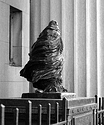cliveh
Subscriber
- Joined
- Oct 9, 2010
- Messages
- 7,619
- Format
- 35mm RF
Deionized water is $2.49 a gallon and PhotoFlo is $7.99 http://www.bhphotovideo.com/c/search?Ntt=photoflo&N=0&InitialSearch=yes&sts=ma&Top+Nav-Search= for 16 ounces that dilute 1:200.
Because it has more purity and simplicity as a liquid for use with film.






 )
)